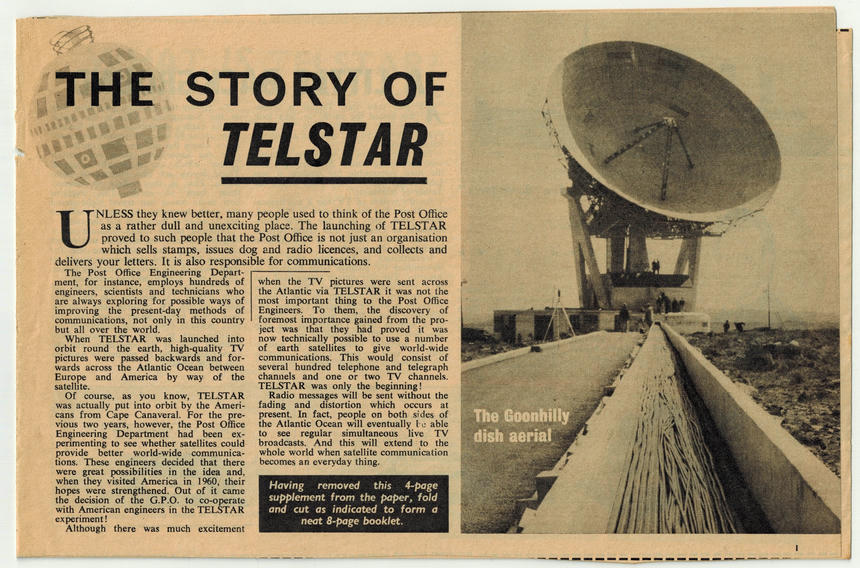Scrapbook 3: The Story of Telstar (1)

THE STORY OF TELSTAR
UNLESS they knew better, many people used to think of the Post Office as a rather dull and unexciting place. The launching of TELSTAR proved to such people that the Post Office is not just an organisation which sells stamps, issues dog and radio licences, and collects and delivers your letters. It is also responsible for communications.
The Post Office Engineering Department, for instance, employs hundreds of engineers, scientists and technicians who are always exploring for possible ways of improving the present-day methods of communications, not only in this country but all over the world.
When TELSTAR was launched into orbit round the earth, high-quality TV pictures were passed backwards and forwards across the Atlantic Ocean between Europe and America by way of the satellite.
Of course, as you know, TELSTAR was actually put into orbit by the Americans from Cape Canaveral. For the previous two years, however, the Post Office Engineering Department had been experimenting to see whether satellites could provide better world-wide communications. These engineers decided that there were great possibilities in the idea and, when they visited America in 1960, their hopes were strengthened. Out of it came the decision of the G.P.O. to co-operate with American engineers in the TELSTAR experiment!
Although there was much excitement when the TV pictures were sent across the Atlantic via TELSTAR it was not the most important thing to the Post Office Engineers. To them, the discovery of foremost importance gained from the project was that they had proved it was now technically possible to use a number of earth satellites to give world-wide communications. This would consist of several hundred telephone and telegraph channels and one or two TV channels. TELSTAR was only the beginning!
Radio messages will be sent without the fading and distortion which occurs at present. In fact, people on both sides of the Atlantic Ocean will eventually be able to see regular simultaneous live TV broadcasts. And this will extend to the whole world when satellite communication becomes an everyday thing.
The Goonhilly dish aerial
Having removed this 4-page supplement from the paper, fold and cut as indicated to form a neat 8-page booklet.